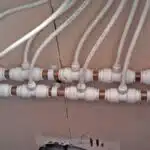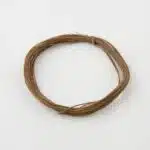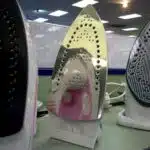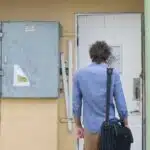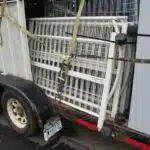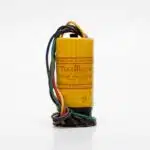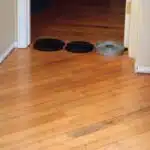Soldering wires is an essential skill for electronics technicians. It involves joining two or more pieces of metal by heating them to the point where they melt and fuse together. This technique is commonly used to connect electrical wires in electronic devices, and it requires a high level of precision and attention to detail.
To successfully solder wires, it is important to have the right tools and equipment, such as a soldering iron, flux, wire cutters, and pliers. Additionally, understanding the properties of different metals and alloys is crucial for achieving a strong bond between the wires. In this article, we will guide you through the steps required to properly solder wires using industry-standard techniques. Whether you are a beginner or an experienced technician looking to improve your skills, this guide will provide you with valuable insights on how to solder wires effectively and efficiently.
Understanding The Basics Of Electrical Connections
A solid electrical connection is crucial in any electronic system. Soldering wires is one of the most common methods used to join two or more wires together. However, it requires proper knowledge and practice to achieve a reliable and safe connection.
One of the most common mistakes when soldering wires is not properly preparing them before joining them together. Before beginning, ensure that the wires are clean and free from any dirt or oil. Using sandpaper or a wire brush can remove any insulation or residue on the wires’ surface, allowing for better adhesion.
It’s vital to take safety precautions when soldering, as it involves creating heat and fumes that can be harmful if inhaled. Always work in a well-ventilated area and wear protective equipment such as gloves and safety glasses. Be mindful of flammable materials nearby that could ignite from the heat generated during soldering. By following these precautions, you can ensure your safety while achieving a successful solder joint.
To select the right tools and equipment for soldering wires, several factors need to be considered. These include the type of wire being used, its diameter, and its intended application. With this information, it’s possible to determine which type of soldering iron tip is best suited for the job at hand. In addition, various types of solders are available; selecting one with a high melting point will ensure a stronger connection that can withstand higher temperatures or vibration without breaking apart easily.
Selecting The Right Tools And Equipment
According to a recent study, approximately 80% of all electronic devices fail due to poor connections. This highlights the importance of selecting the right tools and equipment for soldering wires. Choosing appropriate materials is crucial in ensuring that your soldering work is successful.
One of the most important tools in soldering is the soldering iron. It comes in various shapes and sizes, and it’s essential to select one that suits the project you’re working on. Additionally, ensure that you have a quality solder wire with enough flux. The flux helps to clean the surface of the wire and allows for better adhesion.
Tips for beginners include starting with simple projects before progressing to more complex ones. When choosing materials, opt for high-quality ones even if they are more expensive as they will make a significant difference in your work quality. It’s also crucial to ensure that you have proper ventilation when soldering as fumes emitted during the process can be harmful.
Choosing appropriate materials and tools will help produce professional-looking results when soldering wires. In the next section, we’ll discuss how to prepare wires for soldering, which is a critical step before beginning any wiring project.
Preparing The Wires For Soldering
To prepare wires for soldering, the first step is to strip off any insulation that covers the wire. This can be done using a wire stripper or by carefully using a sharp knife or scissors. It’s important not to damage the conductor inside the wire while stripping it. To ensure you don’t cut into the wire itself, make a small incision on the insulation and then pull it off with your fingers.
Once you’ve stripped off the insulation, you’ll need to twist the wires together to create a solid connection. There are different techniques for twisting wires depending on what type of connection you’re making. For example, if you’re joining two wires end-to-end, hold them parallel to each other and twist them together tightly. If you’re splicing two wires together, overlap them by about an inch and twist them together in a helix. This will create a strong and reliable connection.
To summarize, preparing wires for soldering involves stripping off any insulation and twisting the wires together securely. Here are three tips to keep in mind:
- Use a wire stripper or sharp knife/scissors to strip off insulation
- Twist wires tightly together using appropriate technique
- Avoid damaging conductors while stripping
Now that your wires are prepared for soldering, it’s important to clean the area where you’ll be making your connection. This will ensure that there is no dirt or debris that could interfere with your solder joint. In the next section, we’ll go over how to properly clean your work area before soldering.
Cleaning The Connection Area
Like a surgeon preparing for surgery, proper cleaning of the connection area is an essential step in soldering wires. The importance of thorough cleaning cannot be overstated as it ensures a strong and long-lasting bond between the wire and the solder. A dirty or contaminated connection area can lead to a weak and unreliable joint that may break under stress.
There are various types of cleaning solutions available that can aid in achieving a clean connection area. Some of the most commonly used ones include alcohol-based solutions and specialized flux cleaners. Alcohol-based solutions are readily available and ideal for removing dirt, grime, and other contaminants from the surface. Specialized flux cleaners, on the other hand, help to remove oxidation, which can hinder the flow of solder.
Using the right type of cleaning solution is crucial in ensuring a successful soldering process. Once the connection area has been thoroughly cleaned, it is time to move on to applying flux to the wires. A good quality flux helps to promote good wetting and bonding between the wire and solder, leading to a reliable joint that will not break easily under stress.
Applying Flux To The Wires
After cleaning the connection area, the next step is to apply flux to the wires. The purpose of flux is to remove any oxides that may have formed on the wire surface and prevent new ones from forming during soldering. It also helps the solder flow smoothly and evenly over the wire.
There are different types of flux that can be used, including rosin-based, acid-based, and water-soluble fluxes. Rosin-based fluxes are the most common type and are typically used for electronics applications. Acid-based fluxes are more corrosive and are used for plumbing and metalwork applications. Water-soluble fluxes are less common but can be useful in situations where easy cleanup is important.
One common mistake when applying flux is using too much or too little. Too much flux can cause it to overflow onto other parts of the circuit board or make it difficult to see what you’re doing. Too little will not provide adequate protection against oxidation or help with solder flow. Another mistake is applying the wrong type of flux for your application, which can lead to poor adhesion or even damage to your components. By choosing the correct type of flux and applying it correctly, you can ensure a successful solder joint.
As we move on to heating up our soldering iron, it’s important to keep in mind that proper heating technique is crucial for achieving a strong bond between wires. Heating up your iron slowly and allowing it to reach its optimal temperature will ensure that your solder flows evenly without creating cold spots or cracks in your connection. So let’s get started on heating up our iron properly before moving onto our next step in this process.
Heating The Soldering Iron
Why is heating the soldering iron important? The temperature of the soldering iron plays a crucial role in the quality of your work. If the temperature is too low, it will not melt the solder properly, leading to weak and unreliable connections. On the other hand, if it is too high, it may damage the components you are working with or even cause a fire.
To ensure safety while using a soldering iron, there are some precautions you should take. First and foremost, always wear protective gear such as gloves and safety glasses. Keep your workspace clean and organized to prevent accidents. Additionally, make sure that you place the soldering iron in a heat-resistant holder when not in use to avoid burns or other injuries.
The importance of temperature control cannot be overstated when using a soldering iron. It prevents damage to your components and ensures strong connections that will last for years to come. However, proper safety precautions must be taken to prevent accidents and injuries. By following these guidelines, you can ensure that your work is both safe and of high quality.
| Safety Precautions | Importance of Temperature Control |
|---|---|
| Wear protective gear | Prevents damage to components |
| Keep workspace clean | Ensures strong connections |
| Use heat-resistant holder | Prevents accidents & injuries |
As we move on to the next step in soldering wires together, it is important to keep in mind everything we have discussed so far – particularly regarding temperature control and safety precautions while using a soldering iron. In order to proceed with melting the solder onto the wires effectively and safely, we need to continue paying attention to these factors.
Melting The Solder
To melt the solder, you need to use a soldering iron with a pointed tip. It is essential to practice soldering safety while using the iron. Avoid touching the tip of the iron as it can reach temperatures up to 800°F and cause severe burns. Additionally, always place the soldering iron on a metal stand when not in use. This will prevent accidents and damage to your work area.
One common mistake while melting solder is overheating the connection. This can cause damage to the wire or component you are trying to connect by melting its insulation or burning it out entirely. To prevent this, heat the connection only long enough for the solder to melt and flow freely onto it. Once melted, remove both the solder and the heat source immediately.
Another mistake is not heating all parts of the connection evenly, which can result in a weak joint that breaks easily. To avoid this, move the soldering iron around slightly while applying heat to ensure that all parts of the connection receive equal amounts of heat. This will allow for even distribution of melted solder and create a strong bond between wires or components.
Now that you know how to safely melt solder and avoid common mistakes let’s move on to applying it to your connection without creating any further issues.
Applying Solder To The Connection
After melting the solder, it’s time to apply it to the connection. Using the right technique is crucial for a successful soldering job. First, make sure that both wires are clean and tinned. Tinning involves applying a thin layer of solder onto each wire to prevent oxidation and provide better conductivity.
To apply solder, hold the soldering iron in one hand and the solder in the other hand. Touch the tip of the iron to both the wire and the solder simultaneously until they melt together. Move on to apply heat and solder all around the joint until it’s completely covered.
Tips for beginners: Avoid touching or moving the wires while they cool down as this can cause a cold joint, which is weak and prone to breaking. Also, don’t use too much or too little solder; just enough to fill all gaps without making a blob. Lastly, practice makes perfect! Don’t get frustrated if your first few attempts aren’t perfect – keep trying until you master this skill.
Now that we have applied enough solder onto our wires, we need to remove any excess solder that may have dripped or flowed where it wasn’t supposed to go. This step is essential because excess solder can cause electrical shorts between adjacent connections or create an unsightly mess. In our next section, we will discuss how to remove excess solder using different methods depending on what tools you have available.
Removing Excess Solder
When soldering wires, it’s easy to get carried away and use too much solder. This excess can cause problems with the connection and lead to issues down the line. Removing excess solder is a necessary step in ensuring a secure and reliable connection.
One tip for avoiding overheating while removing excess solder is to use a desoldering pump. These tools use suction to remove the excess solder without applying excessive heat to the wires. When using a desoldering pump, it’s important to ensure that the tip of the tool is heated adequately before use, as this will allow for maximum suction power.
Another tip for removing excess solder is to work slowly and methodically. Rushing through the process can cause damage to the wires or components being soldered, which can result in a faulty connection. Take your time and be patient when removing excess solder, as this will help ensure that you don’t make any mistakes that could compromise the quality of the connection.
Inspecting the connection for quality is an important step after removing excess solder. This involves visually examining the joint for any signs of poor or incomplete bonding between wires or components. Additionally, you should check that there are no stray pieces of wire or other debris left behind after removing excess solder. By taking these steps, you can ensure that your connection is secure, reliable, and ready to meet whatever demands are placed upon it in its intended application.
Inspecting The Connection For Quality
Once the wires have been soldered, it is important to perform a thorough inspection of the connection to ensure that the joint has been made properly. This step in the process is crucial for quality control and ensuring the safety of the final product. An inadequate inspection technique can result in a faulty connection that may cause electrical or mechanical failure.
To inspect a soldered connection for quality, start by checking for visual cues. A well-made joint should be smooth, shiny, and free from any cracks or voids. The solder should also flow evenly around both wires and create a solid bond between them. To further test the integrity of the joint, gently tug on each wire to ensure that they are securely connected.
Quality control does not stop at visual inspection alone. It is also recommended to use a multimeter or continuity tester to measure the resistance across the joint. This will indicate whether there are any breaks in the connection that could cause problems down the line. Properly inspecting and testing a soldered connection is essential for ensuring its durability and reliability in its intended application.
Having inspected and tested your soldered connection for quality, it’s time to move onto cooling it down properly without damaging it in any way.
Cooling The Connection
After soldering the wires together, it is important to cool the connection properly. The cooling process helps ensure that the wire connection stays strong and prevents any damage from occurring. Proper timing of the cooling process is crucial.
One common mistake that many people make when cooling their connections is to rush the process. Cooling too quickly can cause damage to both the wires and the solder joint, leading to a weak or unstable connection. It is important to wait until the solder has completely solidified before attempting to cool it.
Another mistake is to use too much force when cooling the connection. This can cause unnecessary stress on the joint and potentially break it apart. Instead, use a gentle touch and allow natural air flow or a fan to help cool down the connection gradually.
In order to ensure a secure and reliable connection, proper cooling is essential after soldering wires together. Taking your time during this step will help prevent any mistakes from occurring and ultimately lead to a strong bond between your wires. Once your connection has been cooled properly, you can move on to testing its strength and functionality.
Testing The Connection
Now that you have soldered the wires together, it is important to test the connection before moving forward. Testing methods may vary depending on the specific project and components being used. However, a common testing method is to use a multimeter to measure continuity between the two solder joints. This will ensure that there is a complete connection and no breaks in the circuit.
Common mistakes when testing connections include not properly setting up the multimeter or not allowing enough time for the connection to cool before testing. It is important to follow the instructions provided with your multimeter and give ample time for cooling as hot solder can cause false readings on your meter.
Once you have confirmed a successful connection, congratulations! You are one step closer to completing your project. However, if you do encounter issues during testing, don’t worry. In the next section, we will discuss troubleshooting common soldering issues and how to overcome them.
Troubleshooting Common Soldering Issues
- When soldering, it is important to ensure that the wires being worked on are properly heated before applying solder.
- Poor solder joints can be caused by incorrect application of heat to the wires, resulting in inadequate melting of the solder.
- Unsoldered connections can result from insufficient flux being used, which can prevent the solder from adequately adhering to the wires.
- Poorly soldered connections can also be caused by too much solder being applied, resulting in a weak bond between the wires.
- It is important to ensure that the soldering iron is of the correct wattage and temperature to effectively heat the wires and prevent any damage to the wiring.
- Additionally, it is important to use the appropriate flux for the application to ensure that the solder adheres properly to the wires.
Incorrectly Heated Wires
When it comes to soldering wires, one of the most common issues that electronics technicians encounter is overheating. Overheating can cause a myriad of problems such as melting the insulation around the wire, corroding the wire, or even causing the wire to break altogether. Therefore, it is important to prevent overheating by identifying signs of incorrect heating and taking measures to avoid them.
One way to prevent overheating is by using a temperature-controlled soldering iron. This type of iron allows you to set a specific temperature and maintain it throughout the soldering process. Another way is by using a heat sink, which absorbs excess heat from the wire and prevents it from reaching dangerous levels. Additionally, ensuring that your solder joint is properly prepped and tinned before attempting to join the wires can also help prevent overheating.
Identifying signs of incorrect heating is crucial in preventing overheating. Some signs include burnt or discolored insulation around the wire, uneven or incomplete solder joints, or visible damage to the wire itself. If any of these signs are present during your soldering process, stop immediately and assess what went wrong. By taking preventative measures and being vigilant for signs of incorrect heating, you can successfully avoid this common soldering issue and ensure a quality connection for your wires.
Poor Solder Joints
As electronics technicians, we understand the importance of creating quality connections through soldering. However, even with experience, common mistakes can be made during this process. One of these mistakes is creating poor solder joints. Poor solder joints occur when there is insufficient heat or incorrect timing during the soldering process.
One tip for improving the quality of your solder joints is to ensure that both wires are clean and free of any debris before beginning the process. This can be achieved by using a wire brush or sandpaper to remove any oxidation or other impurities that may prevent a strong connection. It is also important to apply enough heat to both the wire and solder, allowing them to properly meld together without overheating.
Another way to improve your solder joints is by using the correct amount of solder. Applying too little or too much can result in an incomplete or messy joint, respectively. To achieve a proper amount, aim for approximately two-thirds the thickness of the wire being joined. Additionally, be sure to hold both wires steady during cooling to prevent any movement that could weaken the joint.
By taking these tips into consideration and practicing good habits during your soldering process, you can avoid common mistakes and create strong connections that will last. Remember, attention to detail and patience are key factors in achieving success as an electronics technician.
Unsoldered Connections
As electronics technicians, we may encounter certain issues that arise from soldering, such as unsoldered connections. An unsoldered connection can occur when the heat source is insufficient or there is not enough solder applied during the process. This can lead to poor conductivity and a weakened connection. To prevent this issue, it is important to ensure that both surfaces are clean and free of any debris that may prevent a strong bond. Additionally, using flux can help prevent corrosion and improve conductivity.
To address unsoldered connections, it is necessary to troubleshoot the problem by inspecting the joint for any visible signs of incomplete soldering. If an unsoldered connection is found, reheat the area with a soldering iron and apply additional solder until the joint appears complete. It is also important to ensure that there is proper heat applied to both wires being joined in order for them to properly meld together.
Preventing unsoldered connections starts with proper preparation before beginning the soldering process. Cleaning both surfaces thoroughly and applying flux can help create a stronger bond between wires and prevent future issues. By troubleshooting unsoldered connections as they arise and following proper techniques during the soldering process, we can ensure our final products have strong and reliable connections.
Learning Advanced Soldering Techniques
Demonstrating advanced soldering techniques is essential for any electronics technician who wants to take their skills to the next level. By mastering advanced soldering techniques, technicians can ensure that their work is precise and reliable. One of the most important tips for precision soldering is to use the right tools. This includes a high-quality soldering iron with a temperature control feature, as well as a variety of different soldering tips.
Another key tip for precision soldering is to prepare the surface properly before beginning work. This means cleaning the area thoroughly and ensuring that there are no contaminants or debris present that could interfere with the bonding process. Additionally, it’s helpful to use flux on the surface before applying heat, as this can help improve the flow of solder and create a stronger bond.
When practicing and improving your advanced soldering skills, it’s important to remember that patience and practice are key. Begin by practicing on simple projects before moving on to more complex ones, and always take your time during each step of the process. With enough practice and dedication, any electronics technician can become an expert in advanced soldering techniques and produce high-quality work that meets even the most demanding standards.
Practicing And Improving Your Skills
Refining your skills in soldering requires practice techniques that will help you improve. Just like any other skill, it takes time and effort to achieve mastery. However, with proper training and discipline, you can hone your abilities and become a skilled electronics technician.
One way to practice is by creating a plan or schedule for practicing on a regular basis. This can involve setting aside dedicated time each day or week to work on different aspects of soldering, such as improving your technique or using different types of equipment. By setting clear goals for yourself and tracking your progress, you can gradually build up your skills over time.
Another helpful approach is seeking feedback from others who have more experience or expertise in the field. This can include working with an experienced mentor or joining a community of electronics enthusiasts who share tips and insights about soldering techniques. By getting constructive criticism and learning from others’ experiences, you can identify areas where you need to improve and develop new strategies for refining your skills.
Ultimately, the key to becoming an accomplished solderer is through consistent practice and dedication to the craft. By incorporating these techniques into your routine and seeking feedback from other experts in the field, you can steadily improve over time and become a valuable asset in the world of electronics repair and design.
Conclusion
As an electronics technician, it is my job to ensure that every electrical connection is done properly. Soldering wires is a crucial part of this process, as it strengthens the connection and prevents any accidental disconnections. Understanding the basics of electrical connections and selecting the right tools and equipment are essential to completing a successful soldering job.
Just like a chef needs to have the right knife or a painter needs to have the right brush, so too does an electronics technician need to have the proper equipment. By following these steps in preparing and cleaning your wires for soldering, applying flux, testing the connection, and troubleshooting common issues, you can become proficient in this important skill. As with any other craft, learning advanced techniques requires practice and dedication, but with time and experience comes mastery.
In conclusion, soldering wires is both an art and science that requires attention to detail and precision. By perfecting this skillset, one can create strong electrical connections that will stand the test of time. Remember: just like how a carpenter measures twice before cutting once or how a musician practices for hours on end before performing live, putting in the effort to master soldering will pay off in dividends for any electronics technician looking to excel in their field.
Image Credits
- “Nose weight: Left- plated wire, right, lead-free solder” by wbaiv (featured)


